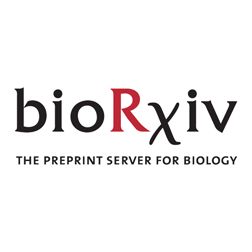#MedSky

Midodrine 5–15 mg TID + Octreotide 100–200 mcg SQ TID: floor-friendly, cheap, but ~10–15%.
Vasopressin 0.01–0.04 U/min or Terlipressin 1–2 mg IV q4–6h: ~50%; watch ischemia/resp.
Norepi: effective, needs ICU. #KidneyWk


Midodrine 5–15 mg TID + Octreotide 100–200 mcg SQ TID: floor-friendly, cheap, but ~10–15%.
Vasopressin 0.01–0.04 U/min or Terlipressin 1–2 mg IV q4–6h: ~50%; watch ischemia/resp.
Norepi: effective, needs ICU. #KidneyWk
🦋
app.dimensions.ai/details/publ...
🦋
app.dimensions.ai/details/publ...
🦋
app.dimensions.ai/details/publ...
🦋
app.dimensions.ai/details/publ...
A natural compound with therapeutic promise for ischemia-reperfusion injury
👉 doi.org/10.22514/sv....
#Neuroprotection #Stroke #criticalcare

A natural compound with therapeutic promise for ischemia-reperfusion injury
👉 doi.org/10.22514/sv....
#Neuroprotection #Stroke #criticalcare
doi.org/10.1177/0963...
#MSC #liver
@journals.sagepub.com

doi.org/10.1177/0963...
#MSC #liver
@journals.sagepub.com

(*imagine wishing for ischemia, what a life)
(*imagine wishing for ischemia, what a life)
#COVID has extensive extrapulmonary manifestations. #Myelitis,
#demyelinatingsyndromes, hemorrhagic and ischemic presentations have been reported.

#COVID has extensive extrapulmonary manifestations. #Myelitis,
#demyelinatingsyndromes, hemorrhagic and ischemic presentations have been reported.
doi.org/10.1016/j.kint.2025.04.033
#NephSky #MedSky #acutekidneyinjury

doi.org/10.1016/j.kint.2025.04.033
#NephSky #MedSky #acutekidneyinjury
I know we had the “toddler in chief” memes back in 2016. But all this feels genuinely more juvenile and tantrum-like.
No upper face effects so it's not Bell's palsy.
No upper face effects so it's not Bell's palsy.
bit.ly/cjo_lupus-me...

bit.ly/cjo_lupus-me...

Credit: Pixabay/CC0 Public Domain Persistent over-dilation of muscle microvasculature may be one cause of chronic limb-threatening ischemia, recent studies by Kuopio University Hospital and the University of Eastern Finland show. In the…

Credit: Pixabay/CC0 Public Domain Persistent over-dilation of muscle microvasculature may be one cause of chronic limb-threatening ischemia, recent studies by Kuopio University Hospital and the University of Eastern Finland show. In the…





